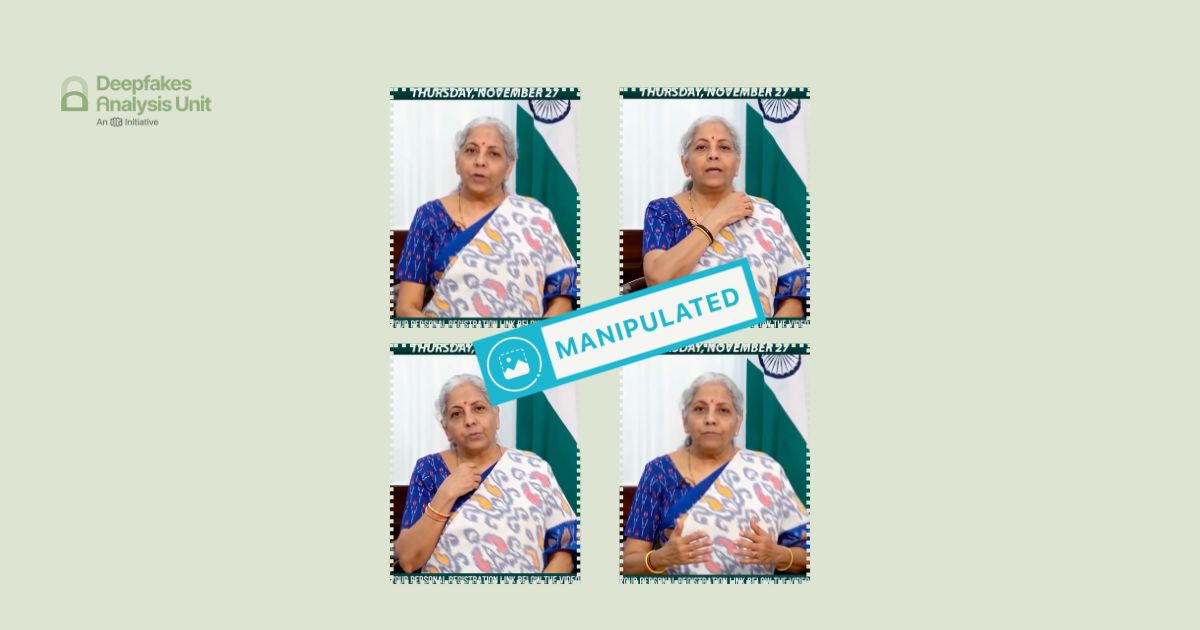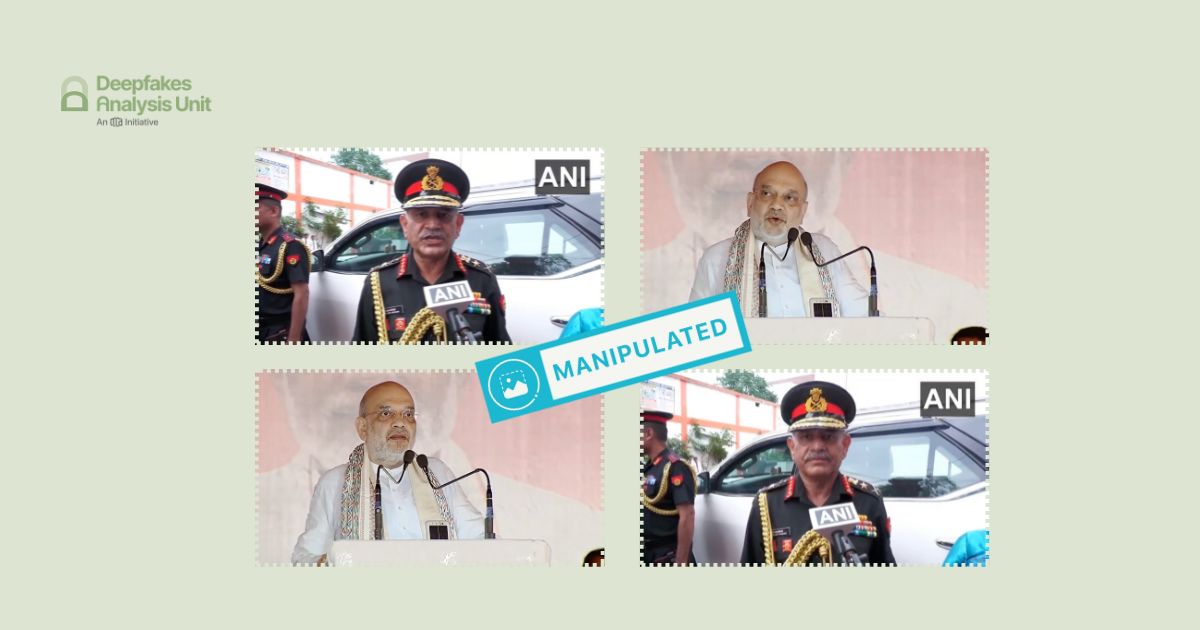The Deepfakes Analysis Unit (DAU) analysed a video in which Kamal Nath, a leader from the Indian National Congress (INC) party is talking to a room full of people, apparently reassuring them that they will be taken care of if they support his party. After examining the video using A.I. detection tools and escalating it to our expert partners for assessment, we concluded that the voice heard in the video is not the leader’s.
The 30-second clip in Hindi, embedded in multiple tweets shared on the microblogging site X, formerly known as Twitter, was forwarded to the DAU by a fact-checking partner for verification. The video was grainy and did not focus on Mr. Nath’s face but for the initial eight seconds where his lip movements were not in sync with the words that could be heard. Around the three-second and seven-second mark there were jump cuts in the video. The rest of the video focuses on the audience and the same male voice heard in the initial few seconds continues to play out with little to no variation in the pitch and tone.
A reverse image search using screenshots from the video along with a keyword search helped us trace the original video featuring Nath, which was posted on the YouTube channel of Lokmat Hindi News on November 14, 2018. The clothing, backdrop, and body language of the INC leader in the original and the manipulated video are identical, while the audio pitch, tone, and delivery in the videos are not identical. The words heard in both the videos are different though the language in each is Hindi.
This old video resurfaced during the ongoing election cycle in India with concerns over whether the video had been manipulated with A.I.-generated voice. To assess that we ran the video through multiple A.I. detection tools.
TrueMedia’s deepfake detector returned results with an overall analysis of “could be authentic or manipulated” when we ran the audio file from the video through the tool. Though the tool gave a 100 percent confidence score to A.I. elements in the audio, it could not identify if there was any real voice in the video as well.
We also ran the video through the deepfake detection tool of Hive AI. The results that returned did not indicate any elements of A.I. in the video. However, Hive’s audio detection tool picked up significant signs of A.I. generation in the last 10-seconds of the audio, an indicator of possible audio manipulation in some parts of the clip.

To get a deeper analysis on the nature of manipulation in the video, we leaned on the expertise of our partners.
ConTrails AI, a Bangalore-based startup, that has its own A.I. tools for detection of audio and video spoofs concluded that A.I. voice cloning was used to generate the speech being attributed to Nath. They noted that this was an example of a very cheap audio clone mixed with background noise and monotonous robotic delivery. However, they also added there is a low probability that a real person’s voice could have been recorded over the visuals seen in the video.

We also approached IdentifAI, a San Francisco-based deepfake security startup. They used their audio detection software to gauge the authenticity of the audio in the clip.
They generated an audio sample of Nath’s voice from two samples of his real voice, and then compared that to the voice from the clip under investigation after removing all background noise from it. Based on their analyses and iterative tests, they concluded that the voice heard in the video is not Nath’s but it is not likely A.I.-generated either, it could well be a real person’s voice.

Using a heat-map analysis, the team tried to compare the real voice of Nath’s and the one heard in the video. The image on the left denotes a comparison between the real voice of the Congress party leader with his audio sample created by the IdentifAI team. The green circles are indicative of the similarities. The image to the right shows the comparison between the voice heard in the video and the audio sample generated using his real voice. There are large areas depicting the dissimilarities between the two voices.
Since the analysis that we received from two of our partners was not in consonance, we escalated Nath’s manipulated video to a lab run by the team of Dr. Hany Farid, a professor of computer science at the University of California, Berkeley, who specialises in digital forensics and A.I. detection.
Dr. Farid’s lab observed that the visuals and audio were de-synchronised, so this is not an authentic video. The audio was obscured with the help of background sounds. After denoising and analysing further, they concluded that the audio is most likely A.I.-generated, and that the video is manipulated.
On the basis of our investigation and analyses from the experts, we can conclude that the video is manipulated. However, it could not be clearly established whether the manipulation was carried out using A.I.-generated voice or was it another person’s voice dubbed over the original visuals.
(Written by Debraj Sarkar, edited by Pamposh Raina.)
Kindly Note: The manipulated audio/video files that we receive on our tipline are not embedded in our assessment reports because we do not intend to contribute to their virality.
You can read below the fact-checks related to this piece published by our partners:
Fact Check: Kamal Nath’s Viral Video Promising To Reclaim The Mosque Land Is Fake
Fact Check: एमपी के पूर्व सीएम कमलनाथ का एडिटेड वीडियो फर्जी दावे के साथ वायरल












